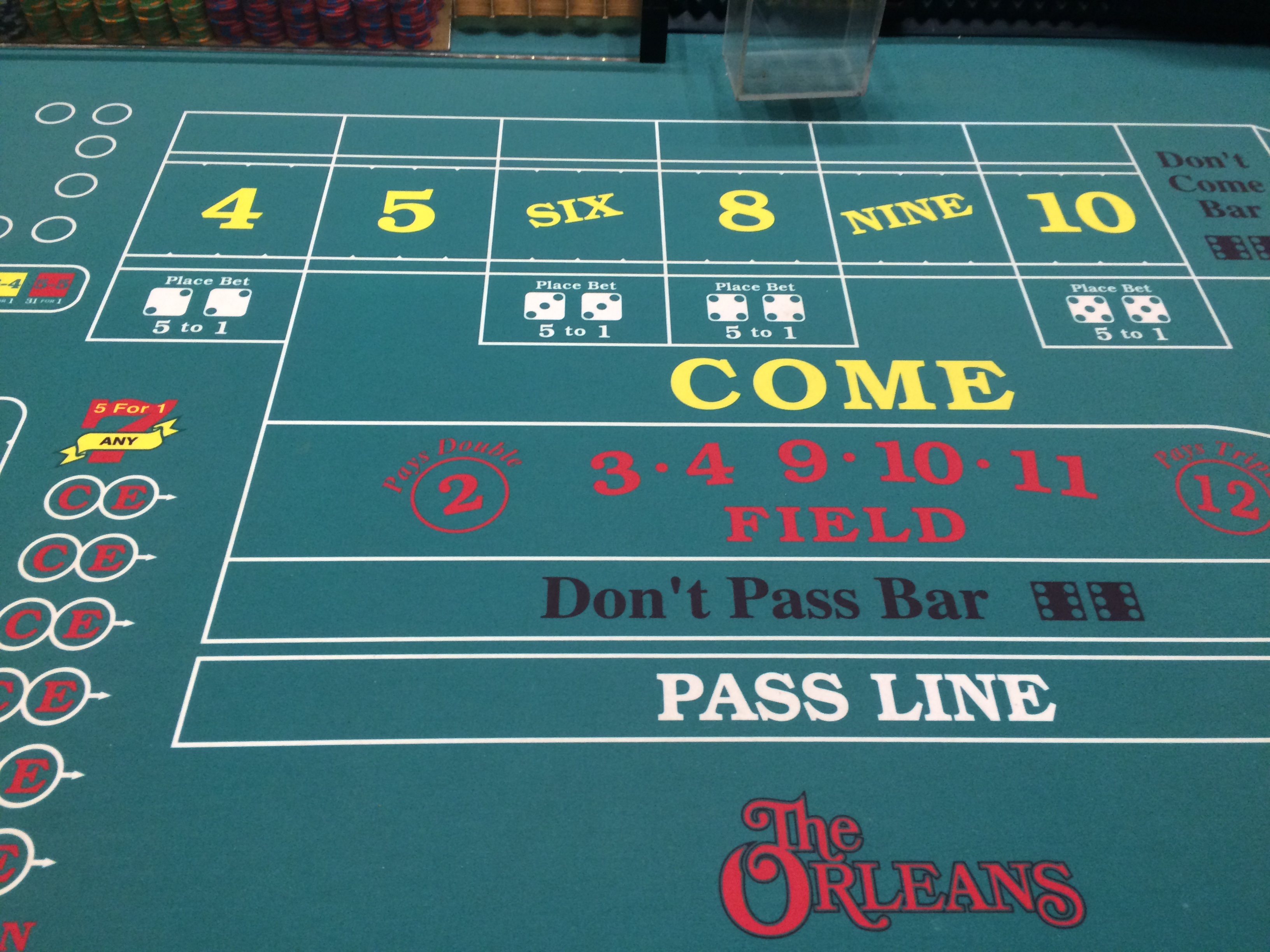Craps Dice Combinations
Possible Dice Combinations in Craps As we have previously explained in this guide, craps is a game of chance that plays with two six-sided dice, with each side having a different number of pips so as to represent numerical values 1 through 6. Each toss of the two dice can result in one of 11 possible numbers, namely numbers 2 through 12. There is, for example, terminology related to the three different types of combinations that can be rolled at the craps table: A NATURAL refers to a total that is 7 or 11 The POINT is a 4, 5, 6, 8, 9 or 10 CRAPS is a total of 2, 3 or 12. The 2 and 12 are the hardest to roll since only one combination of dice is possible to roll. The game of craps is built around the dice roll of 7, since it is the most easily rolled dice combination. Click for information on history, how to play, terminology, table layout and nicknames for craps numbers. Dice Combinations & Probabilities.
Introduction
Craps Dice Combinations
Before you play any dice game it is good to know the probability of any given total to be thrown. First lets look at the possibilities of the total of two dice. The table below shows the six possibilities for die 1 along the left column and the six possibilities for die 2 along the top column. The body of the table shows the sum of die 1 and die 2.
Craps Dice Combinations Chart
Two Dice Totals

| Die 1 | Die 2 | |||||
|---|---|---|---|---|---|---|
| 1 | 2 | 3 | 4 | 5 | 6 | |
| 1 | 2 | 3 | 4 | 5 | 6 | 7 |
| 2 | 3 | 4 | 5 | 6 | 7 | 8 |
| 3 | 4 | 5 | 6 | 7 | 8 | 9 |
| 4 | 5 | 6 | 7 | 8 | 9 | 10 |
| 5 | 6 | 7 | 8 | 9 | 10 | 11 |
| 6 | 7 | 8 | 9 | 10 | 11 | 12 |
The colors of the body of the table illustrate the number of ways to throw each total. The probability of throwing any given total is the number of ways to throw that total divided by the total number of combinations (36). In the following table the specific number of ways to throw each total and the probability of throwing that total is shown.
| Total | Number of Combinations | Probability |
|---|---|---|
| 2 | 1 | 2.78% |
| 3 | 2 | 5.56% |
| 4 | 3 | 8.33% |
| 5 | 4 | 11.11% |
| 6 | 5 | 13.89% |
| 7 | 6 | 16.67% |
| 8 | 5 | 13.89% |
| 9 | 4 | 11.11% |
| 10 | 3 | 8.33% |
| 11 | 2 | 5.56% |
| 12 | 1 | 2.78% |
| Total | 36 | 100% |
The following shows the probability of throwing each total in a chart format. As the chart shows the closer the total is to 7 the greater is the probability of it being thrown.
The Field Bet Example
Now that we understand the probability of throwing each total we can apply this information to the dice games in the casinos to calculate the house edge. For example consider the field bet in craps. This bet pays 1:1 (even money) if the next throw is a 3, 4, 9, 10, or 11, 2:1 (double the bet) on the 2, and 3:1 (triple the bet) on the 12. Note that there are 7 totals that win and only 4 that lose which might cause someone who didn't know better to think it was a good gamble.
The player's return can be defined as the sum of the products of the probability of each event and the net return of that event. The following table shows each possible total, the net return, the probability of throwing that total, and the average return. The average return is the product of the net return and the probability. The player's return is the sum of the average returns.
| Total | Net Return | Probability | Average Return |
|---|---|---|---|
| 2 | 2 | 0.0278 | 0.0556 |
| 3 | 1 | 0.0556 | 0.0556 |
| 4 | 1 | 0.0833 | 0.0833 |
| 5 | -1 | 0.1111 | -0.1111 |
| 6 | -1 | 0.1389 | -0.1389 |
| 7 | -1 | 0.1667 | -0.1667 |
| 8 | -1 | 0.1389 | -0.1389 |
| 9 | 1 | 0.1111 | 0.1111 |
| 10 | 1 | 0.0833 | 0.0833 |
| 11 | 1 | 0.0556 | 0.0556 |
| 12 | 3 | 0.0278 | 0.0834 |
| Total | 1 | -0.0278 |
The last row shows the player's return to be -.0278, in other words for every $1 bet the player can expect to lose 2.78 cents. The player's loss is the house's gain so the house edge is the product of -1 and the player's return, in this case 0.0278 or 2.78%.
For the probabilities in the sum of more than two dice please see my probabilities for 1 to 25 dice section.